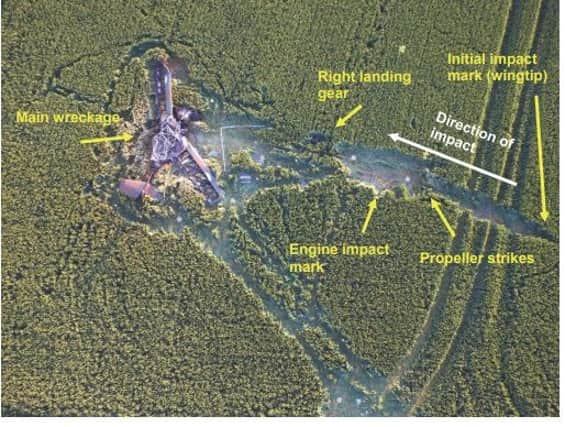Investigation reveals cause of fatal plane crash near Kings Cliffe


The pilot died shortly after his restored vintage ex-military fighter (G-BXON) crashed following take-off at Spanhoe Airfield in June 2017.
A report by the Air Accident Investigation Bureau said the aircraft was observed to bank left into a steep descent and strike the ground to the left of the runway. The pilot was fatally injured, and the passenger sustained serious injuries.
Advertisement
Hide AdAdvertisement
Hide AdThe investigation determined that the aircraft stalled at a low height, from which it did not recover before striking the ground. It was the second flight the pilot had made in the aircraft. The investigation also identified several issues relating to the aircraft and engine performance, maintenance documentation, the Permit to Fly application process, and guidance for pilots preparing for their first flight on a new type.
The report said: “On the accident flight, the pilot took off from Spanhoe’s Runway 27 at around 1130 hrs with a passenger. The pilot occupied the left seat, and the passenger was in the right.
“A number of bystanders who were near the open entrance of a hangar watched the aircraft takeoff until it was obscured from view. Shortly after, on hearing a bang, and realising that the engine noise had ceased, they went outside to find a column of smoke rising from the field left of the departure end of the runway.
“One person phoned the emergency services and some of the group immediately went to the accident site, where the aircraft was found to be on fire. One of this group discharged a hand-held fire extinguisher however this had no effect due to the intensity of the fire. The pilot, who was still inside, was fatally injured. The passenger had sustained serious injuries and was found near the aircraft.”
Advertisement
Hide AdAdvertisement
Hide AdThe report concluded; “The investigation concluded that it was most likely that G-BXON departed from controlled flight because it stalled at a low height after takeoff. G-BXON, as is common to type, did not demonstrate any stall warning in its Permit to Fly flight test. It also demonstrated substantially higher stall speeds and a lower rate of climb in comparison with other AOP.9s and the Pilot’s Notes figures. The pilot was likely to have elected to fly at a departure airspeed which he perceived to provide an adequate margin from the stall regime. In the absence of prompt and appropriate pilot actions, recovery from a stall at a low height was unlikely.
“Examination of the wreckage, although limited to some extent due to impact and fire damage, did not identify any other technical issues which may have contributed to the accident, but there were some systems and flight instruments which could not be examined.”
Following the crash, The Light Aircraft Association (LAA) has taken action on a number of issues to keep pilots and passengers safe.
For more details visit www.gov.uk/aaib-reports/aaib-investigation-to-auster-aop-9-g-bxo